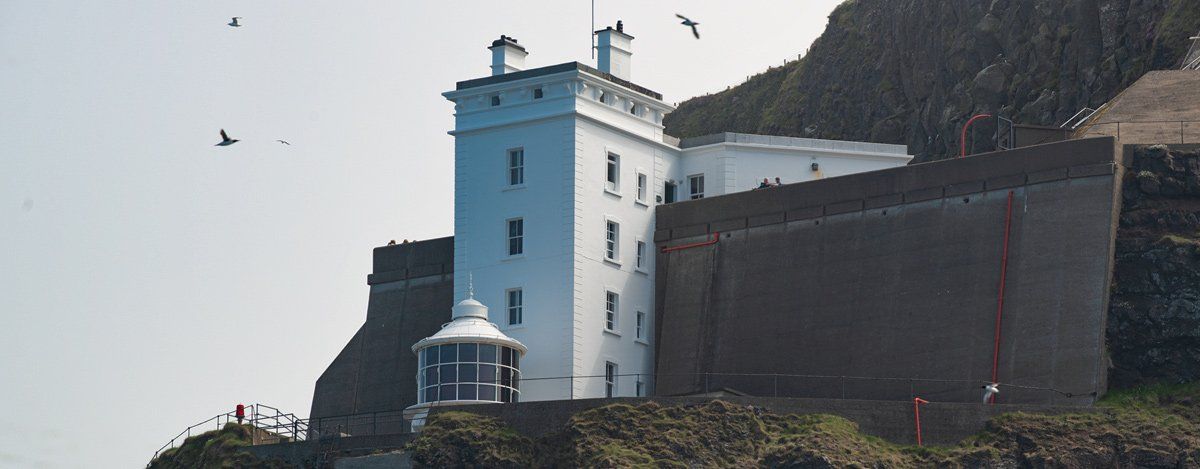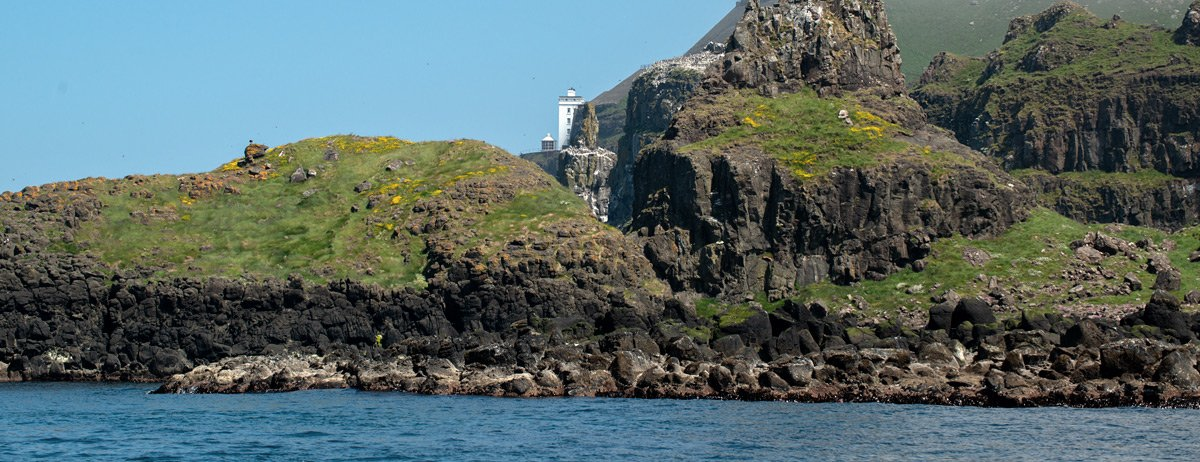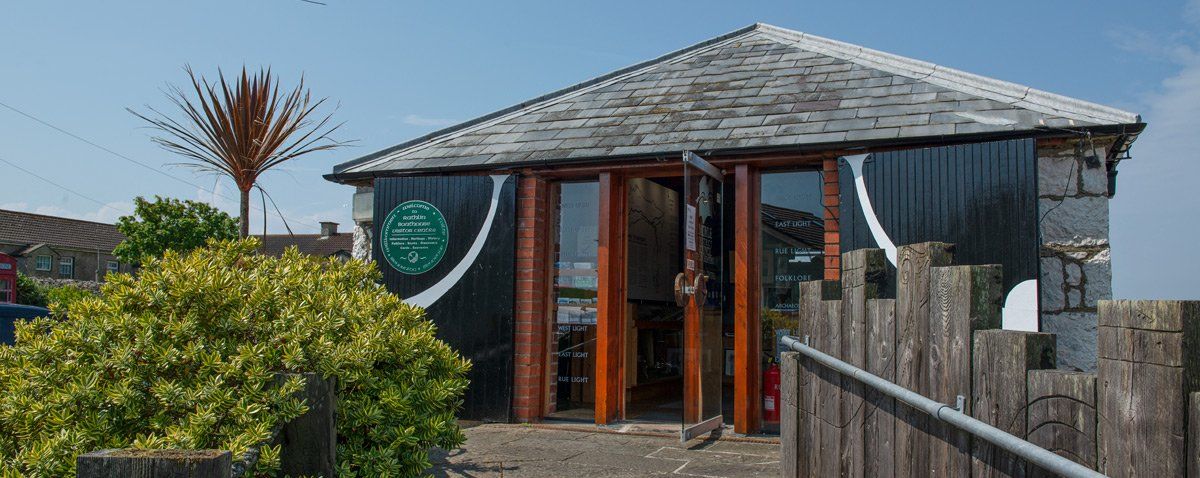Church of St Thomas
The present-day Church of St Thomas was constructed in the early 1800s and built on the site of an earlier church (1722) dedicated to the Primate ‘Thomas’ Lindsay of Armagh from where the name Thomas comes. The site traces its ecclesiastical history to an ancient church building founded here by St Comgall of Bangor in 580 AD. Comgall was born in 510 AD on the shore of Larne Lough and served as a soldier in the army of Dalriada before becoming a Christian, he entered Clonnard monastery and later Clonmacnoise to study, dedicating his life to spreading Christianity he was responsible for founding Bangor Abbey where he was Abbot circa 550AD.
A monastic settlement was established and developed here on Raghery under the auspices of Bangor Abbey. It was raided by Vikings on two occasions (790 and 973 AD) and finally destroyed during a raid in 1038 AD. The Vikings may have established a base here at some time, certainly they would have overwintered here, the evidence of a Viking burial site would also suggest a period of temporary settlement. The earliest gravestone dates to 1665 and is that of James Boyd, the son of Andrew, Bishop of Lismore and his wife Christine Campbell, though burials would have occurred a lot earlier. It is an interesting graveyard with a mixture of religion and race including those of sailors washed ashore from HMS Racoon and HMS Viknor.
One prominent name in the church and churchyard is Gage, John Gage bought the island for £1750 in 1746 from Alexander MacDonnell, the 5th Earl of Antrim (Lord Antrim), at the time John Gage was also the prebendary of the church. This association with the family continued in 1824 when Robert Gage became the curate and then rector. The graveyard like many around the coast of North Antrim contains war graves of those that lost their lives during the First World War. I first became curious after seeing freshly placed poppy wreaths to men lost on HMS Racoon and HMS Viknor in Bonamargie Friary at Ballycastle, this made me wonder about the circumstances which brought these young seamen to their final resting place in a small corner of North Antrim.
The following information was collated from research on the internet and by visiting the graves at Bonamargie, Ballintoy, Raghery and Ramelton in Donegal, other graves can be found in Scotland. Hopefully it will shed a little light on the graves you may see in the churchyard. H.M.S. Racoon was a Beagle class destroyer displacing some 950 tons, built and launched from the Cammell Laird shipyard in 1910. Armaments included - one 4" Primary and three 12 lb secondary guns plus two 18" centreline torpedo tubes - she carried four torpedoes. Her crew compliment at the time of loss was 91 seamen under the command of Lt. George Napier. During the early hours of January 9th, 1918 she was en route from Liverpool to Lough Swilly to take up anti-submarine and convoy duties in the Northern Approaches. In heavy seas and occasional snow blizzards, she struck rocks at the Garvan Isles just off Malin Head and sank with the loss of all hands.
The Admiralty covered up the tragic loss of life by releasing news that the ship had struck a mine when it was a navigational error, subsequently revealed during the enquiry. The ship was sailing through snow showers and went between the Garvan Isles, lost visibility and ran straight into one of the islands. The official practice was to go around when visibility was low. In Bonamargie Friary are the graves of the following seamen from HMS Racoon: W. H. McKay, aged 24 ( RN SS/117528) a 1st class stoker. F. Harvey, Able Seaman (RN J/21488), E. F. Walter, Mechanic (RN 282791) and one unknown seaman from HMS Racoon. In Ballintoy Church graveyard are the graves of W. Griffin ( RN 347735) ship's cook. F.C. Sarez (RN K/44331) 2nd class stoker and F. E. Green (RN J/64519) Ordinary Seaman. In the graveyard of St Thomas, Raghery is H.W. Holder Stoker 1st class (289576).
H.M.S. Viknor was an armed merchant cruiser of the 10th Cruiser Squadron. The ship was built in 1888 as the 'Atrato' by Robert Napier & Sons of Govan East for the Royal Mail Steamship Packet Company and served on the routes between England and the West Indies. She displaced 5,386 tons and was 421 ft long with abeam of 50ft and able to carry 279 passengers. In 1912 the ship was bought by the Viking Cruise Line. At the outbreak of the First World War, the ship was requisitioned by the Admiralty and converted to an armed merchant cruiser and renamed HMS Viknor. She was assigned to the 10th Cruiser squadron to patrol between Scotland and Iceland.
On January 13th 1915 she left her base either from Londonderry or Lough Swilly and headed out into rough weather for her patrol zone, although in radio contact she sank somewhere off Tory Island without sending out a distress signal. All 291 onboard were lost, some report indicate that HMS Viknor had on board 1 German national suspected of being a secret agent and 6 stowaways who were also drowned. Also in the compliment were 25 seamen from the Newfoundland Division of the Royal Navy Reserves. At the time the cause of the sinking was unknown and attributed to either the weather or a mine or indeed both.
In 2006 the wreck was found by a diving club on what is believed to have been the outer edge of a minefield laid by the German minelayer SMS Berlin. Both sinkings resulted in the loss of all those on board, their bodies were washed up on the shores of Donegal, North Antrim, Raghery and the Scottish Islands. Those recovered from the ocean were buried in local graves. In Bonamargie Friary you will find the grave of Private. J. Griffin ( PO 7084 ) and four unknown graves of seamen from HMS 'Viknor'. In Ballintoy Churchyard the grave of E.R. Hewett ( RN J/27300) 1st Class Boy and on Raghery: j.j. Walton Petty Officer 2nd class (1301520) and the graves of six unknown seamen from HMS Viknor.








